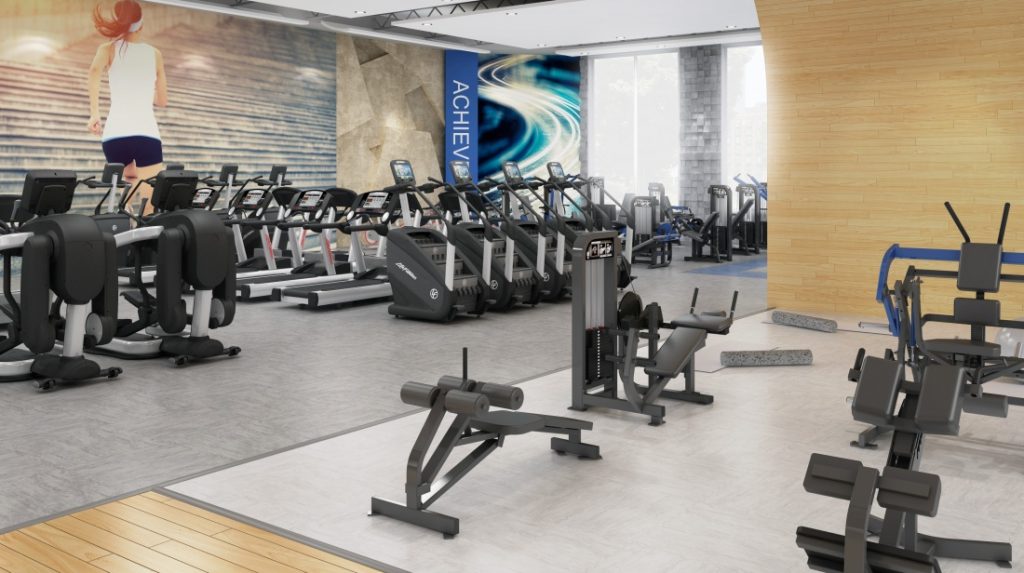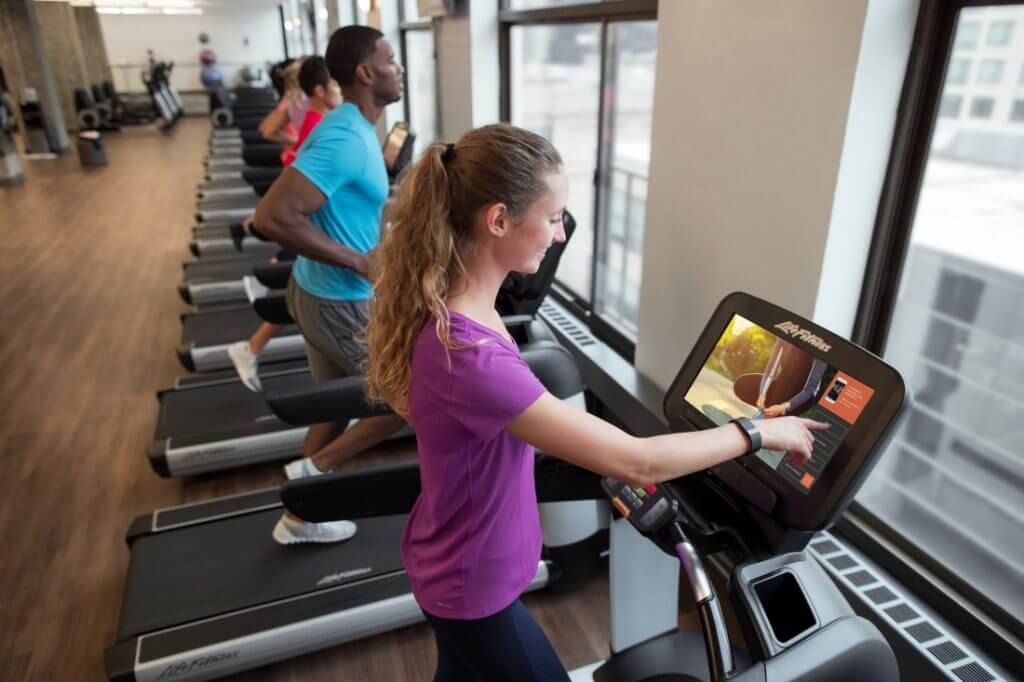Facilities managers of all kinds, and in all environments, should be sure to consider these five commonly overlooked issues in the design and equipping of fitness spaces. Here are our top 5 mistakes managers make when purchasing fitness Equipment:
1. Too many machines: no space for functional movements, core work and stretching
The days of statically sitting on a piece of equipment and pressing weights along a fixed plane are largely over. Functional fitness is big, helping people maximize body movements and functionality, at whatever level of fitness is appropriate. Fitness end users want more choices and flexibility in their fitness routines. When a facility is filled with single-function strength machines, it limits the space, makes it feel crowded and reduces the amount of exercises that can be completed by participants. “People need space to perform functional movements, core exercises, yoga, and stretching,” says Ryan McAfee, an experienced fitness design consultant with Advanced Exercise. “Adaptable training solutions, and adding in options like adjustable pullies that work with mats, kettle bells, resistance bands and other equipment pieces, keeps the choices more open.”
2. Not factoring in current fitness trends
Speaking of functional training, “this practice involves performing natural movements that enhance performance in everyday life or sport,” says McAfee. “It has become one of the most popular forms of exercise and a space for functional movements should be offered in all facilities.” There’s also the obsession around obstacle course racing, like Spartan races or Tough Mudder-type activities, as training is much different than for a basic marathon. Then there’s the CrossFit craze, where burpees, box jumps, pull ups and kettle bells are must-have ingredients. Managers should also embrace technology in fitness spaces to attract participants and keep them coming back for more. Nearly every fitness end user is tracking their progress and paying attention to a screen of some sort as they work out. Many patrons already utilize some form of wearable technology and appreciate when the cardio equipment is compatible with their personal devices.
3. Forgetting the Flooring
Nearly as vital as choosing the right kind of running shoes, fitness flooring isn’t just your run-of-the-mill industrial carpet or vinyl, or it shouldn’t be. As the foundation for heavy equipment, weights that are often dropped from a few feet up, and all manner of jumping, stomping and running footfalls, the acoustics and cushioning material that are specific to high grade fitness floors is important. A frequently neglected necessity, “If a fitness facility, with cardio machines and weights being dropped, is above or below living areas, the right performance flooring should be prioritized to mitigate sound transference. More and more, fitness centers are on upper floors so that views from windows can enhance the experience that this valued amenity provides. In that instance, flooring is an essential component to keeping the fitness experience valuable in part by keeping the peace, literally, with surrounding living areas.”

Ergonomics and aesthetics are also important. According to Athletic Business, “Fitness center design is starting to show more character, and flooring can play a major role. Whether you’re designing a new facility, or redesigning an existing one, never underestimate the impact that flooring can have in terms of aesthetics, sustainability and bio-friendliness.” Just because a flooring concept works well in general use areas, doesn’t mean it’s good for the fitness center too.
4. Buying cheaper equipment that won’t last or is not commercial-grade
“This is not a suggestion that every facility needs to purchase the highest-end fitness equipment on the market,” clarifies McAfee. “Every facility has different budget constraints and customer demographics that can affect equipment purchases. However, managers should understand the difference between residential and commercial equipment.” Purchasing equipment that a single consumer would use at home, or equipment from a big box store, and placing it into a commercial environment can be disastrous. It can void the warranty for one, and consumer equipment isn’t built to withstand the usage that’s necessary to be part of an effective fitness facility. Just think of the hours that a single person can spend on a bike or treadmill, then multiply that by dozens or more when that piece of equipment is part of a commercial fitness facility. Consumer equipment just won’t hold up in a commercial space and stocking your facility with non-commercial equipment will cause more pain in the long run.

5. Not taking care of the equipment investment
You have done your research, consulted with professionals, and made your purchase! Your community of fitness participants is using the equipment and everyone is happy, so you’re done right? In many instances, managers sit back and consider this the end of the process. However, maintenance and service is just as important with fitness equipment as it is with your automobile. If the equipment is forgotten about and not taken care of, problems arise and usually are not easily resolved. If on-site staff is vigilant, they can increase the life of their equipment by incorporating daily cleaning practices and completing monthly or quarterly preventative maintenance. In some cases, treadmills have logged 100,000+ miles, an impressive feat by any standard. That only happens when equipment is properly serviced and kept as “healthy” as its users.
Let us know if you enjoyed our top 5 mistakes managers make when purchasing fitness Equipment!
About Advanced Exercise
Founded in 1986, Advanced Exercise is a leading fitness equipment and facility design resource, representing more than 30 equipment brands to bring clients the best new or used equipment solutions to maximize the use of available space and meet the needs of a diverse community of fitness amenity end users. For more information on fitness equipment and facility design services, visit advancedexercise.com or call 800-520-1112 to connect with one of Advanced Exercise’s experts.




